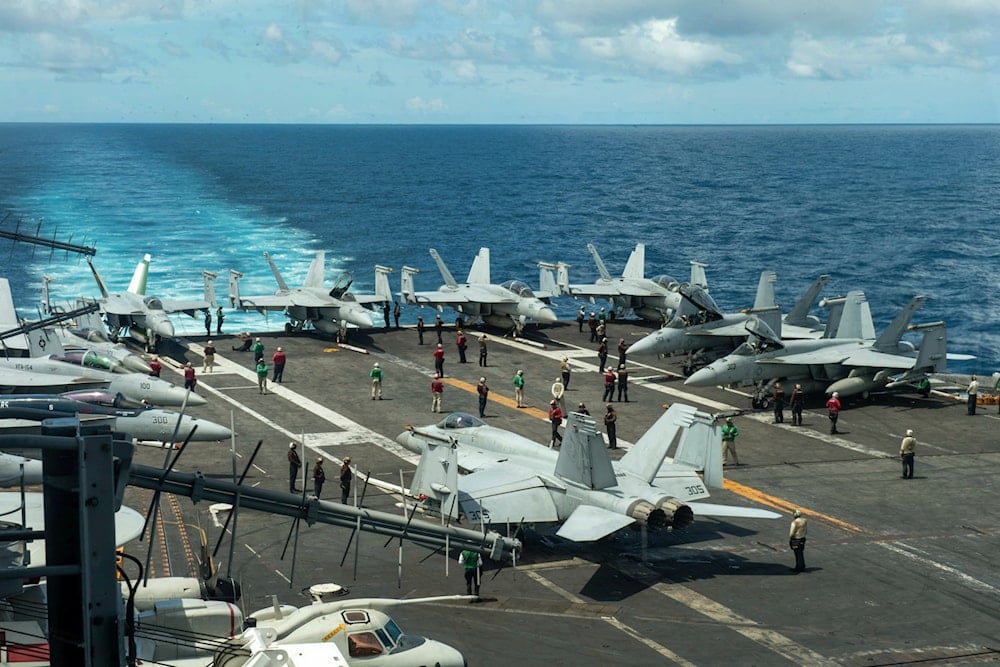Yemeni threat ties down third of US carrier force: National Interest
The US has committed significant resources, including $1 billion in munitions, to intercept Yemeni missiles and drones.
-

In this photograph released by the U.S. Navy, the flight deck of the Nimitz-class aircraft carrier USS Theodore Roosevelt is seen July 4, 2024, in the South China Sea (AP)
The National Interest published an opinion piece on Saturday discussing the US strategy in the Red Sea, particularly in response to Yemeni operations and their impact on American naval resources.
According to writer Samuel Byers, the US has been engaged in the challenging task of launching what he described as a proportional response to the Yemeni-led naval blockade on "Israel", which has lasted for nine months.
In response, the US Navy has deployed four consecutive aircraft carrier strike groups in an attempt to force the re-opening of the route for ships bound to "Israel."
Over this period, the US has prioritized defending a so-called "freedom of the seas" and "safeguarding global trade routes".
Initially, carrier groups led by the USS Gerald R. Ford and USS Dwight D. Eisenhower were present in the area when the Yemenis declared their intent to attack shipping in order to pressure the Israeli regime to cease its genocidal campaign on Gaza.
Later, the USS Theodore Roosevelt and USS Abraham Lincoln strike groups were redirected from the Pacific to address the ongoing operations.
Read more: Yemen’s million-man rallies demand 'devastating' Resistance response
This deployment has effectively elevated the Bab el-Mandeb Strait to the same strategic importance as other critical regions like the Euro-Atlantic, Middle East, and Indo-Pacific.
The US has committed significant resources, including $1 billion in munitions, to intercept Yemeni missiles and drones, focusing on immediate defense rather than tackling the underlying causes of the conflict.
The opinion piece questions whether this heavy commitment is justified, given the perceived small threat posed by the Yemeni Resistance.
It argues that while the principle of freedom of navigation is crucial, the allocation of such a substantial portion of the US naval force, which is also needed to deter major powers like China, may not align with broader strategic interests.
The piece concludes by suggesting that the current US strategy in the Red Sea might not be proportionate to the actual value of the results achieved, given the ongoing risks and significant opportunity costs involved.
Read more: YAF target two ships in Red Sea, Gulf of Aden, one at risk of sinking

 2 Min Read
2 Min Read










